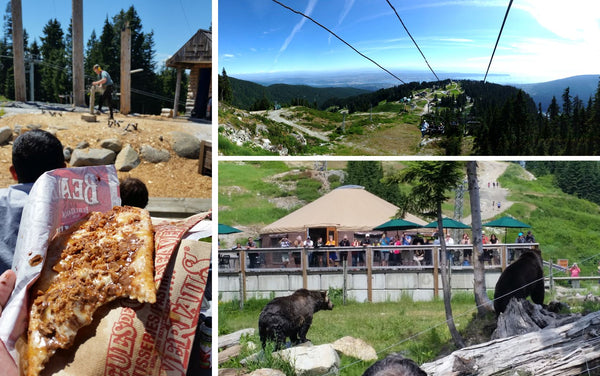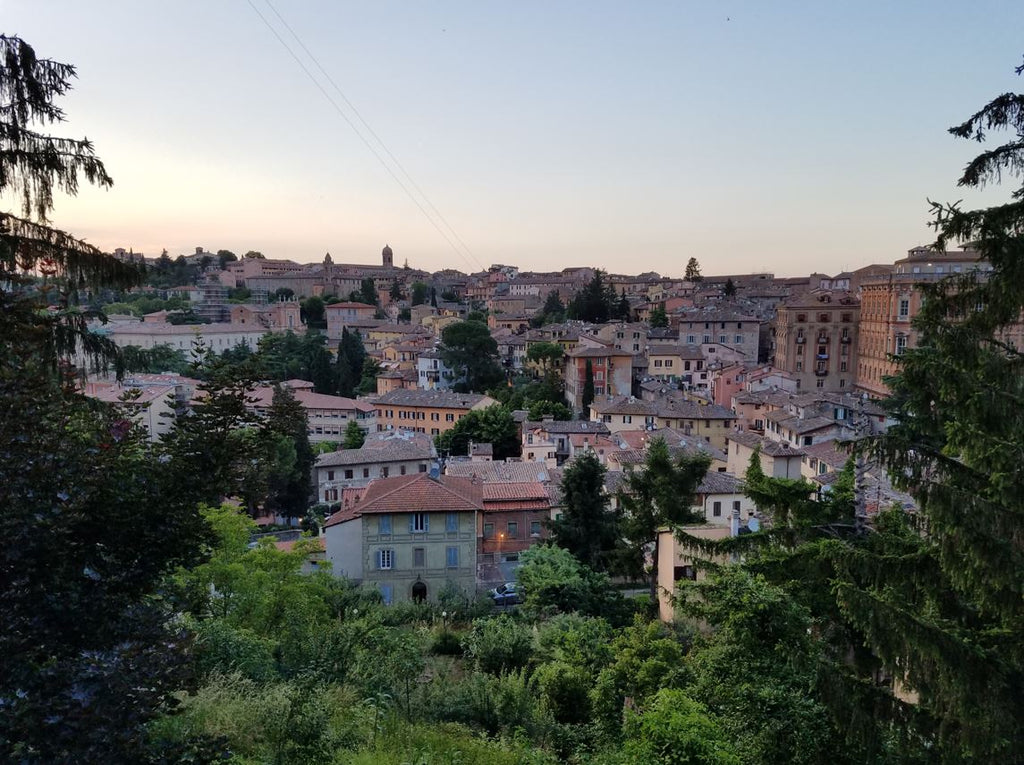Your Cart is Empty
Menu

How to kill it at your next conference
14 min read
Conference season is here! I've been to my fair share (16 not counting University-hosted ones, I think?) and have experimented and refined my techniques for squeezing as much out of each one as possible.
If you're looking for tips on formatting your PowerPoint presentation or writing an abstract, you won't find that here. This is about the conference experience, which is too often neglected in the discussion.
I've made many lifelong friends and started new collaborations using these techniques. Conferences are my favorite and I hope that after you put these tips to use, they will be your favorite too.
This list gives detailed and practical ways to achieve three general goals:
1. Make a lasting impression with your work
2. Make the best (not most) connections with peers and professionals
3. Enjoy the experience and maximize free food and drinks!
1. Nail your presentation
First things first. This is why you’re here. Put the extra time into your presentation before you leave or it will be lingering over your head and preventing you from participating in social activities every day and night until you give your talk.
Actually practice it, out loud, three times through. You need to rehearse the transitions between slides for it to go smoothly. Know the starting words of each slide and the flow in which you will work through each one. Add slide numbers and know approximately at what minute mark you should get to each one.
During your presentation, put your phone or a timer on the podium where no one can see it and cross-reference the slide numbers with your timing every few minutes to dynamically speed up or slow down as needed. Don’t go over. Don’t ever go over.
In college, an old-school professor made us each give a 10-minute talk +/- 30 seconds with no visible timer. Every 30 seconds outside of that window we lost a letter grade. I practiced mine about 6 times for timing and finished within 2 seconds of the 10-minute timer going off. It works, just do it.
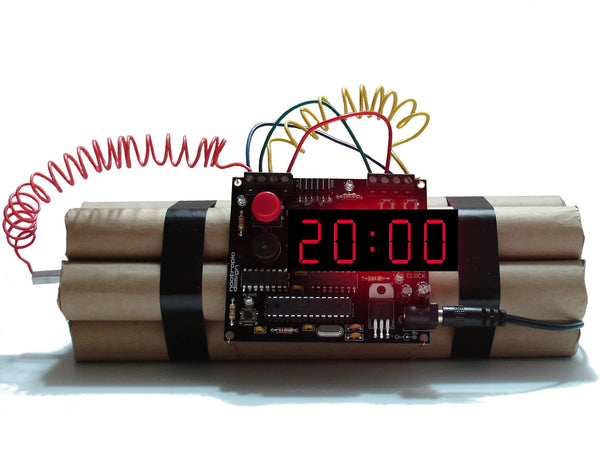
Figure out who is chairing your session (it’s in the program) and look up their research background. They will probably ask you at least one question and it’s good to know their expertise. Ask your professor if they know them. This person may chair your session in future conferences, and it’s a great time to get to know them and establish a reputation. Chances are, they do similar work.
Want to do a 3-month stint at an international lab? You just made the connection. Now, get up there, speak confidently, and show them something interesting (without going over!).
2. Join a professional societies' student organization or outreach activities
Professional societies have cropped up for every discipline and even the narrowest fields, even multiple in one field that have different goals and resources.
See our comprehensive list of Science and Engineering Professional Societies.
These societies are dying for more student and young professional (YP) involvement and are willing (if not actively seeking) to put more resources into K-12 outreach activities. Having students/YP do outreach for them would be accomplishing two goals at once.
It’s as simple as sending an email to a contact on their website an asking how you can get involved. If the society does not have an active student arm, ask if you can start one. It’ll be a great experience for you, for the beneficiaries of the outreach, and it will look great on your resume.
The larger societies have millions of dollars of resources that they allocate each year. A $3000 budget for a high-visibility effort is well worth their money, and they know it. For ideas and lesson plans to run your own science and engineering outreach activities, see our Outreach Resources page.
How to connect with the professional societies at the conference:
Conferences are chock full of professional societies (and hosted by them), so take advantage of the opportunity for face-to-face contact and don’t be intimidated. The men and women that run membership services, outreach efforts and conference planning are personable and will love to talk to any budding young scientist or engineer that shows an interest in their society.
Find their booth, pour yourself a free coffee, take a free cookie, grab a promotional brochure and ask the person sitting there about opportunities for student/YP involvement.
Get their business card and follow up with an email after the conference is over, unless they suggest you meet again during the conference. They are typically swamped in the weeks leading up to and during the conference and will have time to respond next week when it’s over and they are back home at their day job.
Many societies offer student memberships for $20-$150, while a full professional membership is $400-$1000+. If they don’t have a student rate, they should. Ask for one. If they don’t have a young professional rate or a system to transition student members at a discount, they should. Ask for one. The membership will include a monthly/quarterly magazine whose worth is what you make of it and steep discounts on conference attendance that will pay for the membership fee if you go once or twice a year.
The best part about the professional society is connections. If you can become a student leader for them, you will interface directly with membership services coordinators (who have contacts at every company you may want to work for), the other students (who will be your colleagues in a few years) and the president/board of directors (who are influential professors, company CEOs and research lab directors) who can get you an interview in their sphere of influence with one email.
Oh, and that society mixer? Go to that, get a drink, and start talking. [Free drink/meal counter: 1/0]
How to engage at the society mixers:
Look for the middle-age men and women not wearing suits, introduce yourself, and ask them about their day. Then ask how they are involved and who would be the best person to talk to about student involvement. You’re looking for the student activities or membership services coordinator.
Once you get to this person, you’ll find them personable and eager to talk about anything that’s not stuffy and scientific (they don’t usually have a science background). Ask if they’ve found any good bars near the conference center. You may find that some of them are going there after the mixer along with a few of the more social and fun society members (who will buy you drinks). [Free drink/meal counter: 3/0] If you need to read the room, ask them “who is that interesting-looking person over there (in a suit)?”. You’re asking because you think you were at their talk earlier, or saw them in the society journal last month.
My #1 rule for society mixers is that elbowing your way into a circle to tell the plenary speaker that “I found your talk very interesting” and not having a real plan to turn the contact into a follow-up is a waste of time.
Once you run out of knowledge tidbits and inquisitions about their work (they don't want to talk about work right now), the others around will go back to what they were talking about. You'll then find yourself standing there awkwardly and the speaker will not remember you next year when you do the same thing. I've tried this and seen it tried many times without ever seeing a real connection made.
Now, when you follow the advice above, meet the gatekeepers first and become an active student leader for them, you will end up getting business cards attached to hand-written thank-you notes from a board member that happens to own a company you may want to work for (this is actually what happened!). Make that kind of impression and they will remember you for the rest of their career.
3. The writing is on the walls (Go to the poster session)
Many people may feel snubbed if their submitted abstract is pegged for a poster session instead of a 10-20 minute presentation. The truth is, even though your abstract didn’t look like one of the top submissions, the poster session often yields greater tangible benefit to the presenter than a standard talk.
Posters give the opportunity for direct questions and answers between interested parties and often result in the exchange of business cards or ideas for future work that would otherwise be missed in a standard presentation format. It can be more valuable to have a 10-minute discussion with one person than to give a talk to a room of 20 attendees with a 1-minute Q&A and no break to meet afterward. Which is more likely to result in a collaboration or a future job?
The next best thing about the poster sessions is that they often have free food and/or drinks. [Free drink/meal counter: 5/1] Feel free to satiate your nervous cravings with all the cheese, meatballs and fried vegetables your heart desires!
The poster session is also a great chance to meet other students or plan social activities for the rest of the night.
Need an icebreaker? The writing it literally on the walls. Everyone there is standing next to a conversation starter and they are actually required to stand there for 2-3 hours and be open to conversation. Forget their name or where they are from? It’s on the poster! If only more social situations were like this! Is there a line for drinks?
Wait until that famous professor or fun group of students from another school gets in the line and use the time to strike up a conversation. Bonus points if the professor has extra drink tickets and gives you the rest because he/she is leaving after this one. Give them your business card so it’s a fair trade.
4. Fly in a day before

My favorite thing to do at a conference is fly in Saturday or early Sunday morning and take the day to get to know the city. There are many ways to do this, but my favorite way is going for a "distributed" run. I’m not in good enough shape to go for a long run, so this “run” happens in bits and pieces over several hours.
Plan out an approximate route on your laptop the day before (you might not be able to check in yet) or ask the concierge at the hotel for recommendations of neighborhoods and site-seeing. Take your phone, a credit card, your ID and $20 in cash. Run in one direction until you see something interesting or get tired (whichever comes first) and slow down to take in the sights or sounds, snapping pictures along the way.
Pin interesting restaurants or bars on your phone as you come to them for suggested activities later in the week. Loop around to the government buildings, the parks and the shopping areas. Stop and get some street food (walk for a while after!) and feel free to just sit on a bench and enjoy the sounds of the city. In some cities you may even find a short hike into the hills or a good beach to hang out on.
The goal is to see some sights and get familiar with the city by getting your geographical bearings and identifying places of interest for group outings. Later, when you are standing in a circle with a newly-formed friend group awkwardly waiting for someone to suggest something to do, you can fire off a few fun places. This will make for a much more memorable experience than when everyone goes back to their rooms at 8pm when the conference activity ends!
5. Elect yourself “social chair” (Rally the students)
The secret that everyone knows but few act on is that most young people at a conference want to meet their peers from around the country and the world. Many students come to conferences alone and most others are in small groups of 2-6. Occasionally there will be a nearby school that has 10-20 students in attendance.
These small groups would love to join up but they need a “Social Chair”. This is the person that has the gumption to set up a meeting point and convince several small groups that “a group of us are going there after this”. Good thing you have a pocket full of fun places to go from your city trek on Sunday!
Go ahead and elect yourself Social Chair. You deserve it!
It’s easy to step up when no one else asks for the stool. Most students will be thrilled that someone is taking on the responsibility of bringing people together. You will create friendships and experiences that may last a lifetime. You will see these students again at other conferences and every time it’ll just get easier to bring them together. You may even meet up with one a year later in the Swiss Alps for a few days of your European vacation for some hiking, cheese and beers. Your other conference friend from Italy may even come up to join! Like we said, a lifetime.
Where and how should I get to know the students? Glad you asked! One of the simplest ways is to search for a Facebook group (or make one) specifically for the conference. Often a professional society with an active student arm may create one months before to help organize roommates and student activities. Contact the host society’s student or membership coordinator and ask if one exists. If not, take the liberty of creating one and tell them about it. Use it to organize a meet-up after the student mixer on Sunday or Monday night.
Once you’re on-site the first day, check the program for student activities. There should be a student mixer or general mixer the first or second night of the conference. Also look for student contests in the expo area around lunchtime. These usually draw groups of undergraduates that prepared something ahead of time and can be fun to watch the schools go head-to-head. Mark these times down along with the poster sessions, which are mostly undergraduate and graduate students.
On the first day, buzz the booths in the expo and along the corridor for any student groups that are handing out materials or recruiting. See if they have anything planned for the week. You’re also likely to find at least one other small mixer or free food gathering for students/YP in the late afternoon if you look hard enough. [Free drink/meal counter: 6/2]
6. Rule The Drink Ticket Black Market (Mixers are a must)
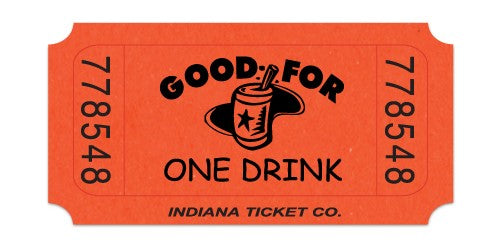
Drink tickets at a conference are worth their weight in Lutetium. Drink tickets are an Orwellian attempt by the organizers to provide a fun event while simultaneously suggesting an appropriate volume to imbibe. Control the drink tickets to control your conference fate. Sharing extra drink tickets you’ve acquired is the fastest way to make new friends! Here are a few tips for breaking free of the shackles that have been placed on you:
- Professors are the single greatest source of free drink tickets. Don’t be shy about mentioning “they never give us many tickets as these things” and you’ll often find the professors willing to part ways with their last ticket. If you know other people either not going to the mixer or leaving early, ask for their tickets. [Free drink/meal counter: 7/2]
- Keep an eye on the floor. Seriously. You will find at least 5 drink tickets on the floor of any venue at any instant in time. [Free drink/meal counter: 8/2]
- Make a motion dropping your drink ticket into the box while they are pouring your order, but don’t actually let go of it. This might take some courage! [Free drink/meal counter: 9/2]
- Walk out quickly after the first half hour, then come back and get in the ticket line at the entrance. Most of the time the organizers won’t notice. When they do, they likely won’t say anything because it’s not their money and they would rather the students have a good time than call them out. [Free drink/meal counter: 11/2]
- Be friends with the drink ticket distributors. This is more difficult, but doable if you follow the advice in the above section about becoming a student leader for the professional society. This may result in what we call “drink ticket handshakes”. Share your newfound wealth with your friends so everyone has a good time. [Free drink/meal counter: 13/2]
- Bring a flask. If you can’t take advantage of the system, just avoid it altogether. Only for the most barren mixers where you must stay for hours and you only get one drink ticket (or it’s a cash bar, *gasp*). Not for getting you drunk, but for distributing so all your friends (and new strangers) can have at least something to sip on that doesn’t cost a day’s wages in grad school. You can be the hero. Don’t get caught!
7. Drink with your professors (or for them)
If you managed to get a drink ticket from a professor at the mixer, you’re in good shape already. Now it’s time to take the next step and get a drink with them. This can be done without crossing any legal or moral boundaries.
Often they will host an alumni mixer that you’re invited to - you just don’t know it yet. Ask them if one is happening and they will extend an invitation. This will typically be held at a nearby bar. It’s a fantastic place to make connections with former alumni currently working at the companies or labs in your university’s pipeline. Bring some business cards! Sit and have a good conversation with your professors and they are likely to order you one on their tab. [Free drink/meal counter: 14/2]
Ask them about their favorite conference location to steer away from the typical academic conversations. You’re likely to get a good story from them and get insight into how they get the most out of a conference. If it gets late, they may even ask if they can ride back to the hotel with your group to save some cab fare (also from experience!).
8. Make Science into Art
Many conferences hold little-advertised contests that involve creating art out of your science. This can be a fun side-project and you may even win $100-$500 if you have something interesting ($200 in my experience!). Most involve taking images, either from a microscope or some simulation, and taking some liberty with the colors and other photoshopped elements to give it some pizazz.
My favorites are those that are completely abstract to the untrained eye but are actually precisely formed by research topics of interest (nanomaterials, biological processes, etc.). This gives it a unique duality depending on your expertise.
Check the host society’s website for contest announcements.
9. Skip it. (Take a half day off toward the end)
Perhaps the best way to make a memorable experience at a conference is to skip it. Don’t fly back until Thursday or Friday, and pay for your own cheap hotel or hostel for an extra night if you must. The conference will often have a luggage holding area until late that evening if that’s easier than your hotel.
Most of the important conference events are Wednesday or earlier. No one will notice if you aren’t there on Thursday.
Check out the top activities in or around the city ahead of time and plan out the day you’ll do it. Be ambitious. Get an Uber, a bus, or rent a car if you must. You may not be back in this city for decades, if ever.
Having this planned will also be a great anchor activity to recruit new friends to come along throughout the week. You’d be surprised how many professors secretly have plans to do the same!
Here are a few of the things I did at the tail end of conferences over the last few years of graduate school.
I hope this inspires you to take advantage of these opportunities and make some new friends and some new memories!
Ate a beaver tail (a pastry) at the top of a mountain in Vancouver with four new friends while watching a free lumberjack show from the world champion lumber jack next to a grizzly bear den.
Drove 3 hours down the California coast from San Francisco to Monterrey, stopping at the beach, the redwood forest and having dinner at sunset on the water across the Golden Gate Bridge.
Brewery tour in Portland on a Wednesday afternoon after roaming through the city’s famous Japanese Gardens and before a sponsored party on the riverside.
Wandered through a restored castle at sunset on the top of a hill in Italy with three new friends, beers in hand after getting advice from the woman running the local beer shop.
9-hour hike to the top of a volcano in Korea where I ran into someone who was at my talk and recently started a company in my field. Ever exchanged business cards at the top of a volcano?
Plan an ambitious activity, recruit some friends and don’t feel guilty about taking some time for yourself. This is your reward for all the work that went into your presentation. You deserve it. Happy conferencing!
Subscribe below for alerts when new blogs are published!
Also in Life after the PhD - Finishing grad school and what's on the other side
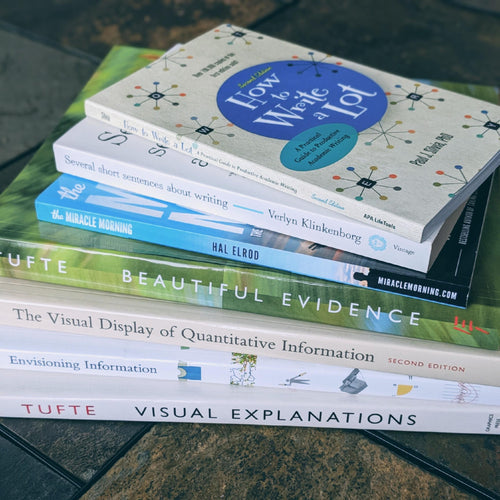
11 books to help get you through grad school (in 2025)
11 min read
Think you only have time to read text books in grad school? That’s what I thought too. You have more time than you think. Your future self will tell you so (trust me). The 5-15 hours and $8-$35 it will take you to read any of these books will pay itself back in time and earnings many-fold throughout your student life and in your first job offer after graduation. Invest in yourself and reap the benefits later.

How to read scientific papers quickly (and effectively organize them for a literature review)
10 min read
It can seem like an impossible task: tediously reading dry academic research articles, following citations in never-ending circles to somehow come away with a structured literature review of the field. Two papers down and you’re already falling asleep. It’s a deeply unsettling feeling of hopelessness that I once felt as well. Here's what I did to overcome it.
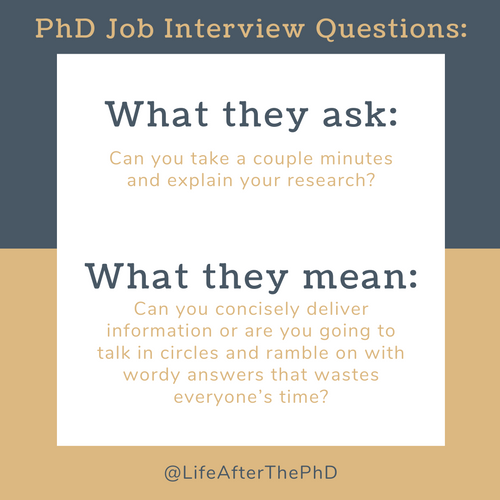
8 PhD Job Interview Questions: What They Ask vs. What They Mean
3 min read
Interview questions aren't always what they seem. Outsmart the interviewer by studying this list of common questions that are meant to answer a question that isn't directly asked.
Author
Recent Articles
- 11 books to help get you through grad school (in 2025)
- How to read scientific papers quickly (and effectively organize them for a literature review)
- 8 PhD Job Interview Questions: What They Ask vs. What They Mean
- 27 ILLEGAL Interview Questions to Know Before Your PhD Job Interview
- How I negotiated for an extra week (and a half!) of vacation at my first post-PhD research job
- How to kill it at your next conference
- Why I left academia in search of self-development
- Common pitfalls of PhD thesis writing and 17 tips to avoid them
STEM Gift Lists
Stay up to date
Drop your email to receive new product launches, subscriber-only discounts and helpful new STEM resources.
Carbon-neutral shipping on all orders
Subscribe
Sign up to get the latest on sales, new releases and more …

